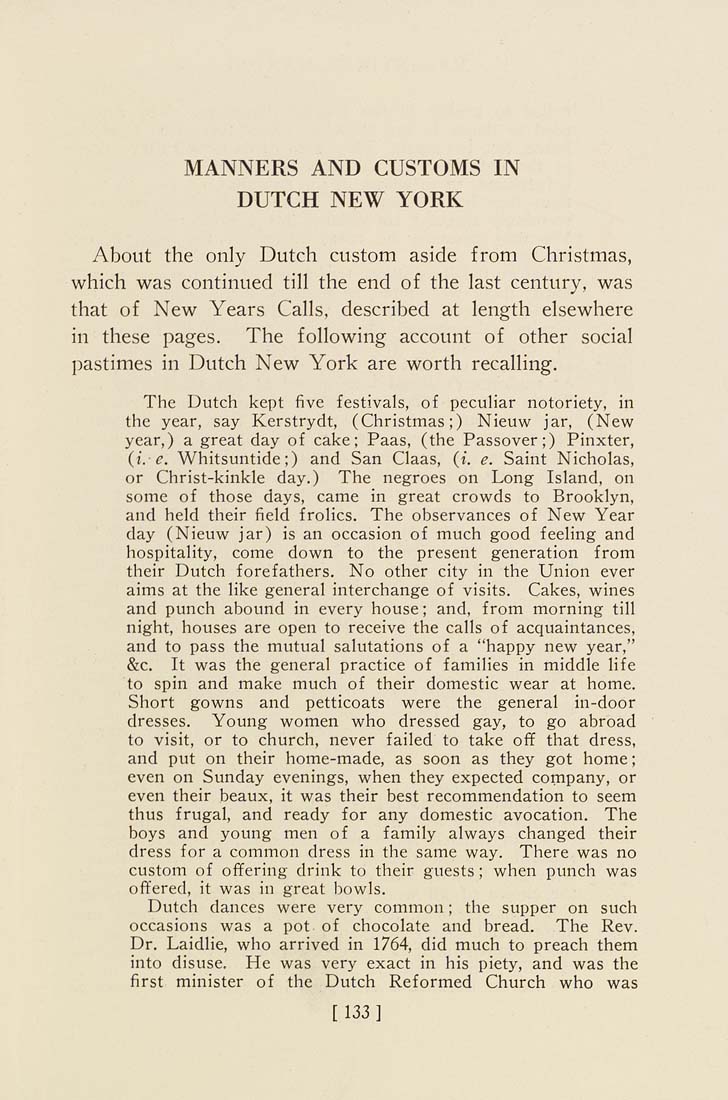MANNERS AND CUSTOMS IN
DUTCH NEW YORK
About the only Dutch custom aside from Christmas,
which was continued till the end of the last century, was
that of New Years Calls, described at length elsewhere
in these pages. The following account of other social
pastimes in Dutch New York are worth recalling.
The Dutch kept five festivals, of peculiar notoriety, in
the year, say Kerstrydt, (Christraas;) Nieuw jar, (New
year,) a great day of cake; Paas, (the Passover;) Pinxter,
(i.e. Whitsuntide;) and San Claas, (i. e. Saint Nicholas,
or Christ-kinkle day.) The negroes on Long Island, on
soinc of those days, carae in great crowds to Brooklyn,
and held their field frolics. The observances of New Year
day (Nieuw jar) is an occasion of much good feeling and
hospitality, come down to the present generation from
their Dutch forefathers. No other city in the Union ever
aims at the like general interchange of visits. Cakes, wines
and punch abound in every house; and, from morning till
night, houses are open to receive the calls of acquaintances,
and to pass the rautual salutations of a "happy new year,"
&c. It was the general practice of fainilies in raiddle life
to spin and make much of their domestic wear at home.
Short gowns and petticoats were the general in-door
dresses. Young woinen who dressed gay, to go abroad
to visit, or to church, never failed to take off that dress,
and put on their home-raade, as soon as they got home;
cven 011 Sunday evenings, when they expected company, or
even their beaux, it was their best recoraraendation to seera
thus frugal, and ready for any domestic avocation. The
boys and young men of a faraily always changed their
dress for a common dress in the same way. There was no
custom of offering drink to their guests; when punch was
oft'ered, it was in great bowls.
Dutch dances were very commoii; the supper on such
occasions was a pot of chocolate and bread. The Rev.
Dr. Laidlie, who arrived in 1764, did much to preach them
into disuse. He was very exact in his piety, and was the
first minister of the Dutch Reformed Church who was
[133]
|








